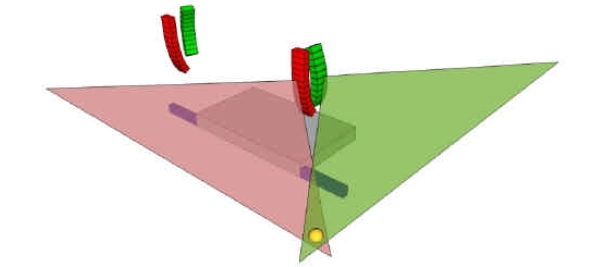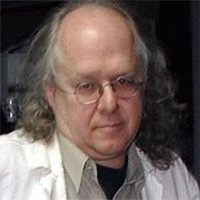Often, it’s necessary to cover audience angles wider than the horizontal pattern of a single line array, even an array of 120-degree loudspeakers. In such cases, multiple line arrays are needed, as shown in the diagram below.
When multiple arrays are used to cover a single area, the loudspeakers must be positioned and aimed for best sound and minimum wave interference (a.k.a., comb filtering). Here’s a procedure for getting smooth coverage and minimizing comb filtering over the entire coverage angle, followed by a diagram.
1. Rig
A. Arrange side stack for a 5-degree to 10-degree overlap in the intersection zone. With 120-degree side loudspeakers, this will require the side stacks to be pointed more than 90 degrees offstage. Don’t worry—this looks strange but it works!
B. Hang the side stacks closely behind the front stacks. Get the two as close to each other as possible. This may require swinging the front stacks outward to clear the side stacks as they are hoisted up.
2. Tuning
A. Place a measurement microphone (or a good set of ears) in the middle of the overlap zone—where the little gold sphere is in the diagram.
B. Adjust the relative timing of the two stacks for time alignment at the test point.
C. Equalize the side array with a broad 5 dB to 8 dB dip at 200 Hz. This will prevent midbass beaming at 45 degrees off axis.
This setup approach minimizes the amount of overlap between coverage areas of the adjacent line arrays. In the small areas that do overlap, the procedure ensures that signals from the two arrays arrive in time synchronization, or nearly so.
Thus, there is only a small “zone of confusion” in which listeners are hearing sound from both arrays, and in that zone, time smear is minimized. our experience is that when this procedure is followed correctly, overlap effects are nearly inaudible in most circumstances.
Another Way
A different approach to going around the corner has been proposed by others. In their scheme, the line arrays are situated quite far apart—20 feet to 30 feet (7 meters to 9 meters) or more—and may be aimed so as to have considerable overlap.
As we understand it, this scheme is based on the idea that when one puts the loudspeakers sufficiently far from each other, the sound arrival times from the two arrays are very different at most listening positions.
So different, in fact, that with most program material the signals are fairly unrelated to each other. If two signals are unrelated to each other (the technical term is “decorrelated”), then they can not cancel and reinforce each other in the way that makes comb filtering.
We won’t comment on how good this approach sounds, but our opinion is that in many production environments, flying widely separated loudspeaker clusters isn’t feasible. We prefer the closely-spaced approach, if only for that reason.
This article was provided by Electro-Voice senior scientist Jeff Berryman and the tech department at Electro-Voice.
















